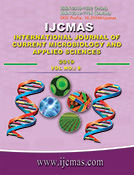


 National Academy of Agricultural Sciences (NAAS)
National Academy of Agricultural Sciences (NAAS)

|
PRINT ISSN : 2319-7692
Online ISSN : 2319-7706 Issues : 12 per year Publisher : Excellent Publishers Email : editorijcmas@gmail.com / submit@ijcmas.com Editor-in-chief: Dr.M.Prakash Index Copernicus ICV 2018: 95.39 NAAS RATING 2020: 5.38 |
The most successful plants on earth are the grasses. They are monocotyledonous plants. They have been a survivor on the planet despite of various ecological changes. They deserve the medicinal value and therefore considered as novel repositories. The grass family is considered as sacred. It has great significance in ayurveda because of medicinal as well as clinical properties. The Desmostachya bipinnata (L.) (commonly recognized as halfa grass, big cordgrass, and salt reed-grass) and Imperata cylindrica (L.) (commonly recognized as cogon grass, kunai grass, blady grass, alang-alang, lalang grass, cotton wool grass, kura-kura) are the two grasses that constitute vital ingredient in various Vedic sacrifices (Yagnas) and rituals. These two grasses are found along river beds and plains throughout India. Both of them are well known for their medicinal properties as supported by traditional Ayurvedic scriptures. They are the vital component in traditional medicinal formulations such as Tripan chamool, Kusadya-ghrita and Kusablecha, that are used to treat many disorders such as dysentery, diuresis, jaundice, skin infections like disease. The present attempt is the review enlightening the bioactive molecules such as flavonoids, glycosides isolated from these two grasses. The ecological monitoring is one of the essential strategies required for the conservation of biodiversity of the medicinal plants.
 |
 |
 |
 |
 |